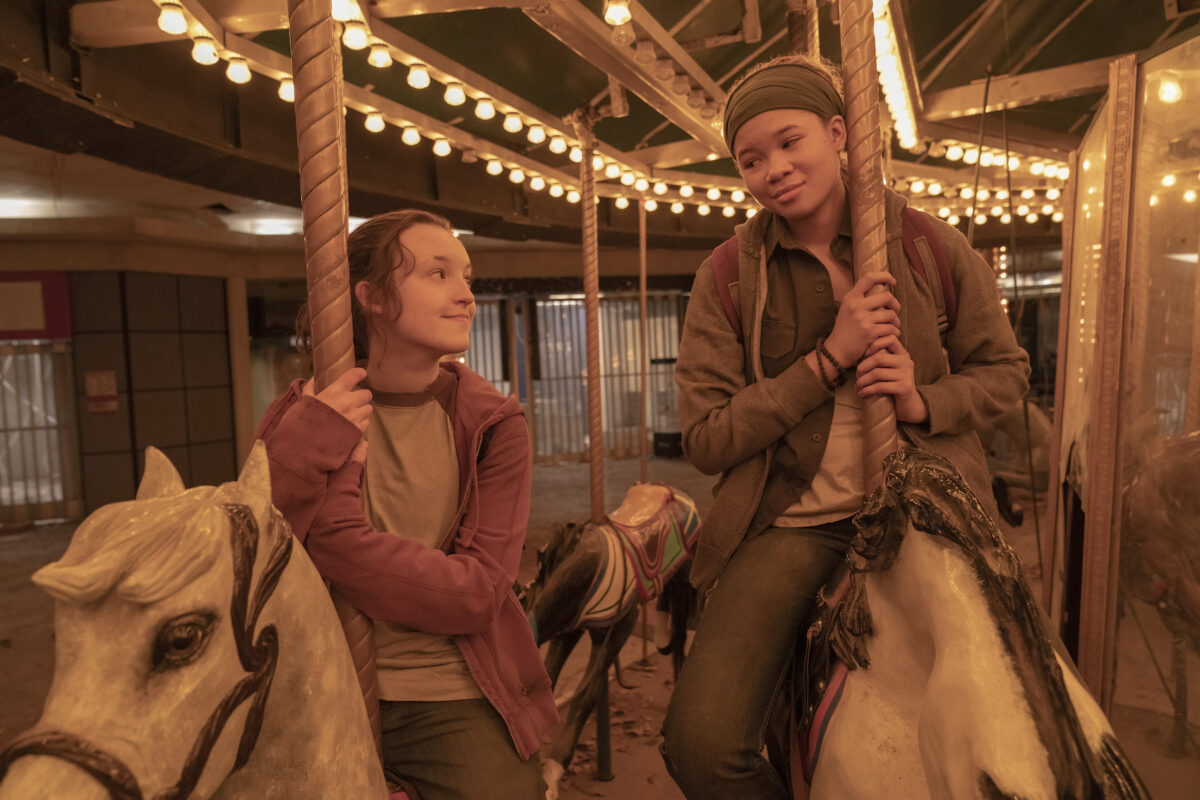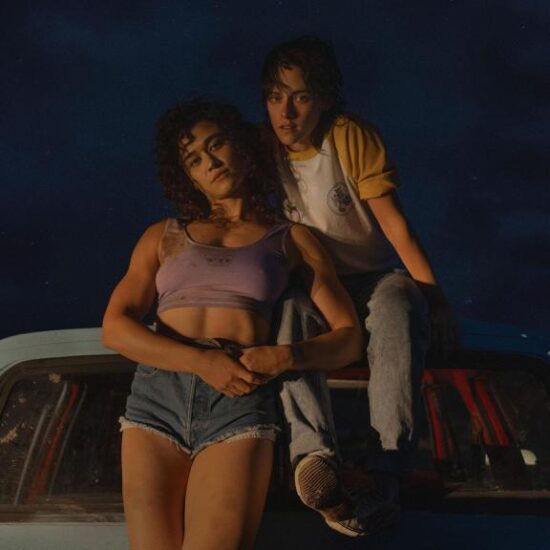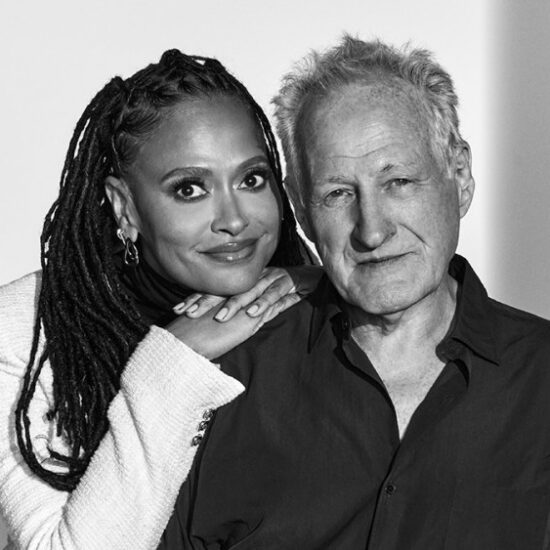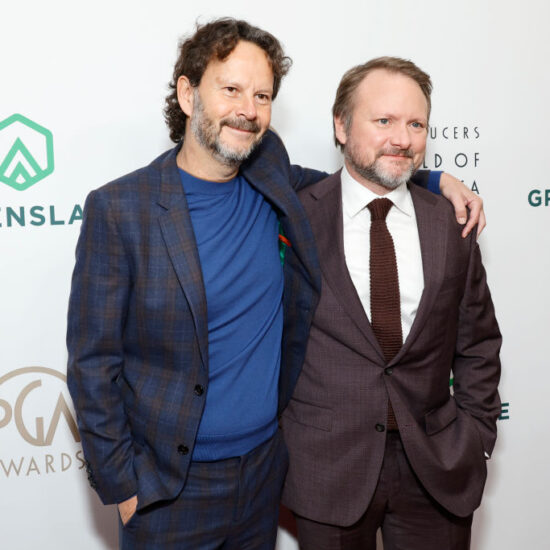
Much has been written about why Season 1 of HBO’s “The Last of Us” succeeds on its own terms as television, not merely a narrative recreation of the Naughty Dog video game series. But the unique perspective of video games informs the show’s approach to both character and setting and makes its exploration of love after the end of modern civilization as consuming as the Cordyceps infection. Spoilers (and puns) ahead.
The show had the advantage of having one of the game’s creators, Neil Druckmann, as a showrunner, but also of having its other showrunner, Craig Mazin, know and love the experience of playing through “The Last of Us.” The team brought an existing emotional attachment to the game that came across in subtle moments, like when the game’s Ellie Williams, Ashely Johnson, appears in the series as Ellie’s mom and spiritually passes the baton to Ramsey with a heartbreaking, loving, “You fucking tell ‘em, Ellie.”
But the games’ level of detail and the player’s control over the environment also informed the kind of television world that Mazin, Druckmann, and “The Last of Us” team built. “I’m definitely the kind of player that tries to take advantage of all the little things that Naughty Dog leaves for you to look at, whether they’re interesting textures or bits of architecture or notes or discarded material,” Mazin told IndieWire’s Filmmaker Toolkit podcast, in an interview conducted before the Writers Guild of America went on strike.
“There’s also an opportunity [when playing the games] to look at the things you wanna look at. If you get to a place where you want to just take a moment and look around, assuming you’re not being, you know, chased. And that is an interesting thing. Sometimes you could just stop, and those moments were where I chose to stop and look around or think were a reflection of my experience playing it and a reflection of the moments that I think meant something to me.”
It took a cohort of DPs and artists across departments, but “The Last of Us” strove to suggest that same possibility of stopping, looking around, and finding a detail that is of interest.
“The obsession with detail and the general philosophical belief that you should never leave a blank space even if people won’t see it is something that we aspire to with the show,” Mazin said. “We try and fill in as much as we can so later, whatever angle we choose, we know there is stuff and that if people really look closely, they will appreciate little things.”
The same level of layering applies not just to what the camera can see but how it sees and situates characters in the frame. “So much of what we do is trying to figure out how to have an intention and then communicate that intention so that it is received,” Mazin said. “The more the camera moves around in camera-ish ways, the more the camera is positioned in a place that a human eye wouldn’t be, the more it feels like it’s being presented and I don’t want to present anything. I want people to feel like they’re in it.”
Feeling like we’re in it means stressing where the characters look and the moments they emotionally absorb whatever’s in front of them. The debris of the world before the Cordyceps outbreak is everywhere in “The Last of Us.” For as much as the show loves to go handheld and catch its actors up close in moments of extreme conflict, rarely does the background ever fade away.
“What happens when people are adapting video games is they try and adapt the gameplay, but it’s not the gameplay that immerses you, I don’t think. I think it’s just the immediacy of the environment and your position in it,” Mazin said. “And the way to simulate that through a passive process like watching television is, I think, in part to shoot it in a way that feels non-presentational, non-stylized, bare bones in the sense of grittiness and reality.”
With such a solid visual representation of the world, “The Last of Us” has the freedom to create perspective shifts that broaden its scope, even if it means deviating from the games’ storyline. Episode 3 exists as it does in part, according to Mazin, because it was important for the audience to experience the breadth of the two decades post-outbreak.
“You can’t shift perspectives in the game. We can and we have to. And so in the game you meet Bill, he’s grouchy. He’s pissed off. He refers to a former partner. Then your relationship with him is really pegged to gameplay,” Mazin said. “What I wanted to do was say, ‘Let’s imagine what the story is of Bill [Nick Offerman] and Frank [Murray Bartlett] untethered from the game and use it to show the passage of time.’ I think that’s a useful thing for people to experience and to experience through a relationship.”
For Mazin, it all comes back to relationships, and the places where the show massively deviates from the games are ones where new relationship dynamics work as a tutorial of sorts. The positive example of Bill and Frank and the negative example of Kathleen (Melanie Lynskey) help us understand the shifts in Joel (Pedro Pascal) and Ellie’s relationship and how their love grows alongside their potential for violence on each other’s behalf. “If there’s no note from Bill, it’s over,” Mazin said.

The fantasy of complete power to protect who we love and kill whoever stands in our way is what’s so intoxicating about Westerns, the genre whose conventions “The Last of Us” most embraces once it crosses the Mississippi (John Ford wishes he gave Clementine Carter a horse named Shimmer). And if there is a thematic weakness in “The Last of Us” as a game, it is the nihilistic insistence of “Part II” that that Western strongman power fantasy is the most essential, reflexive core of human nature and not a choice shaped by timing, circumstance, and community, or lack thereof.
The show’s already done a more nuanced job of showing what revenge looks like when it becomes all-consuming and love becomes a tyrannical force. “Kathleen’s love for her brother, who was basically Jesus, has poisoned her blood to the extent that she cannot stop herself from avenging him. She doesn’t know how. Even if on some level she knows it’s wrong, she can’t stop. She is not in control of the depth and the profundity of her own love,” Mazin said. “And the grief that love caused is, again, one of the downsides of love: It rips our heart out when the people we love die.”
But there is a difference between devastation and destruction and it’s one that still matters, even in an apocalypse. Mazin, Druckmann, and director Jeremy Webb all take great care that, even within the chaos of the showdown in the cul-de-sac in Episode 5, the camera helps us track how Ellie perceives the Infected swarm. We watch Ellie watch Kathleen take her gun out to shoot Sam (Keivonn Woodard), her mind clouded by revenge even at the cost of her own survival. Ellie watches as it is one of the Infected kids who rips Kathleen’s face off. Ellie watches, and then she runs.

Kathleen’s, Ellie’s, and certainly Sam’s suffering in Episode 5 are not, in themselves, profound. Cruelty is shallow, and pain and grief are perfectly ordinary. Anyone, everyone, feels at least a kind of the all-consuming grief Kathleen does and anyone can take those feelings out on other people – just ask the Roy siblings. But what is profound about “The Last of Us” is what Mazin and Druckmann do with the interaction of all their characters’ love and fear: Show us how they always ripple outwards and affect (infect, perhaps?) other people.
This is done by the camera moving in a very involved way but focusing on characters at the moment they’re absorbing what someone else is saying or doing. “I’m a big believer that the times when things are most impactful to me is when I see somebody listening and being affected,” Mazin said. “It makes it less about a presentation and more about an experience.” Which means that, for all that the show’s camera likes to be moving and at the character’s level, the filmmaking on “The Last of Us” is always knit together through a multiplicity of perspectives. The camera always lets us see what Kathleen’s obsession no longer allows her to: Everyone in that musty Kansas City neighborhood is just as human as everyone else — especially the moment that the world’s new inhuman apex predators show up.

There is one very key exception to this approach and it’s one that supports the show’s overall style by deviating from the rule: Joel’s assault on the Fireflies in the Salt Lake City hospital in Episode 10 to rescue Ellie. “We always intended that [that scene] would actually be presentational because what we wanted the audience to feel there was a dissociation from reality. Joel is dissociating. Those people aren’t people to him anymore,” Mazin said.
The presentational nature of the scene comes across partly from visual choices to focus on impressionistic, off-kilter details as Joel moves through the hospital. But amplifying the visuals and the sound cues to show Joel’s interior state only went so far in terms of making the scene feel like the tragic loss of control that it is. “It was feeling kind of traditional and we had tried lots of things and it was keeping me up at night because it was fine. It was fine. It just didn’t deliver that intention to me of dissociation and tragedy. What you’re watching is somebody lose themselves. They are giving something away permanently to preserve another thing,” Mazin said.
Mazin found another perspective to layer onto the sequence that does create the feeling of a loss of agency: the Gustavo Santaolalla soundtrack to the video game. “There’s this awesome track that’s married to you walking around, killing Fireflies on your way to rescue Ellie, and it’s very percussive and it’s very dark and it was awesome in the game. But then I just got towards the end and there’s the most beautiful rendition of this theme, ‘All Gone,’ that starts with a single cello note and grows into this full lamentation,” Mazin said.
“And I went back to our editor on that episode, Tim Good, and I said, ‘Well, this is a crazy idea, but don’t take this music and put it underneath [what we already have]. Take this music. Lay it out and then start again and see what happens, just with this feeling.’ And what emerged was something that we all thought delivered the intention and made [the scene feel] different. It connected you to the terrible sadness of what Joel was doing,” Mazin said. “In the game, that theme plays underneath after you save Ellie and you’re leaving. The game kind of lets you go, and underneath, the score is this commentary of this sad beauty.”

What happens in the hospital is arguably the boldest thing that “The Last of Us” does as a video game: It makes you put Ellie’s life ahead of humanity’s survival (assuming one buys this is, in fact, the only way to create a vaccine). There are no branching ending options depending on one’s total score. By shattering the show’s visual language into something that is impressionistic over realistic, and presentational, the HBO series creates the same effect on the viewer. It makes us feel the crushing violence and disappointment that, to paraphrase the old filmmaking cliche, there were a thousand ways for Joel to point his gun, but really only one.
“Loss of agency, to me, is what happens when love takes over a little bit. Like when, I don’t know, a fungus takes over. You’re not you anymore. You’re now being driven by something else that supersedes your morality, your rationality, your agency, and it’s so sad to me. It’s just sad,” Mazin said.
Film uses omission and inference, the life that happens in the spaces between cuts, for us to tell ourselves a story in our heads even as we’re seeing it play out on screen. Video games, by contrast, are the only art form where a player must act as an agent in the creation of a story. Mazin and Druckmann needed to translate that kinetic participation to a passive viewer medium, and they did it through the show’s use of multiple and layered perspectives. Even in telling Ellie and Joel’s story, the camera catches the echoes of hundreds of others and creates the sense that even more are waiting just out of frame — we just have to catch it on the next play-through.














